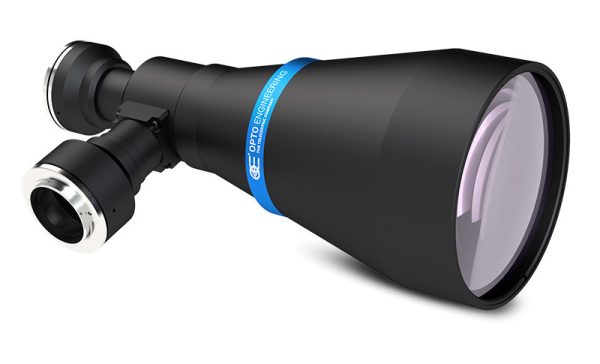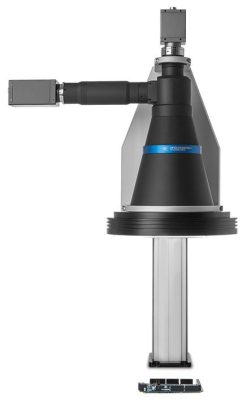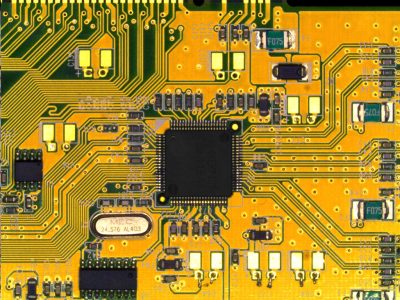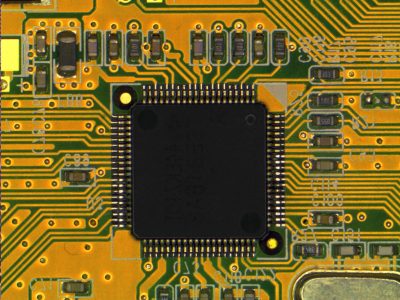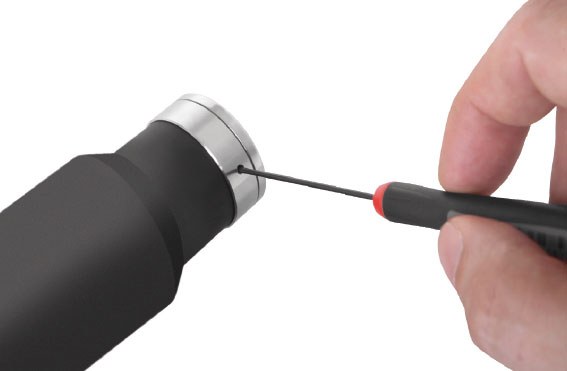TCDP PLUS series
Dual magnification telecentric lenses
Overview
Models
Downloads
Related
Resources
Multi mag
Key advantages
- Perfect measurement accuracy
TCDP PLUS telecentric lenses produce two images at different magnifications to cover an extended range of your product dimensions with the same accuracy. - Smart cost reduction
Solving two vision tasks with one lens involves less components and lowers the vision system cost. - Detailed test report with measured optical parameters.
TCDP PLUS series is a range of dual magnification telecentric lenses supporting two cameras to measure objects with different magnifications. They are the perfect choice for measuring components of different sizes but also for applications where an entire sample and some of its smaller features have to be measured with the same accuracy. The fixed design of these lenses ensures perfect repeatability with no need to recalibrate after each magnification change.
TCDP PLUS lenses help cut the cost of your vision system: you only need to integrate one lens, one illuminator and one mount.
TCDP PLUS lenses are compatible with CMHO clamping mechanics and LTCLHP collimated illuminators, as well as LTRN ring illuminators designed for the standard TC series.
TCDP PLUS lenses are compatible with CMHO clamping mechanics and LTCLHP collimated illuminators, as well as LTRN ring illuminators designed for the standard TC series.
Discover more
Learn
Basics
Online tools
Optics finder
Camera finder
Lighting finder
Imaging lens selector
Projection lens selector
Please wait
Unable to process your request
Back to models
Filters
Close
Reset Filters
Notes
- With IMX387 (21.7 mm diagonal) sensors, the FOV of TC4MHRyyy-x lenses may show some vignetting at the image corners.
- Working distance: distance between the front end of the mechanics and the object. Set this distance within +/- 3% of the nominal value for maximum resolution and minimum distortion.
- Working f-number (wf/N): the real f-number of a lens in operating conditions.
- Maximum angle between chief rays and optical axis on the object side. Typical (average production) values and maximum (guaranteed) values are listed.
- Percent deviation of the real image compared to an ideal, undistorted image. Typical (average production) values and maximum (guaranteed) values are listed.
- At the limits of the depth of field, the image can still be used for measurements. For a very sharp image, however, only half of the depth of field should be considered. Pixel size used for calculation is 3.45 μm.
- Object side, calculated with the Rayleigh criterion with λ= 520 nm
- Indicates the availability of an integrated camera phase adjustment feature.
- Measured from the front end of the mechanics to the camera flange.
- Right-angled ocular length, measured from the optical axis of the frontal lens to the camera flange
Back to models
Press & marketing content
Metrology white paper

